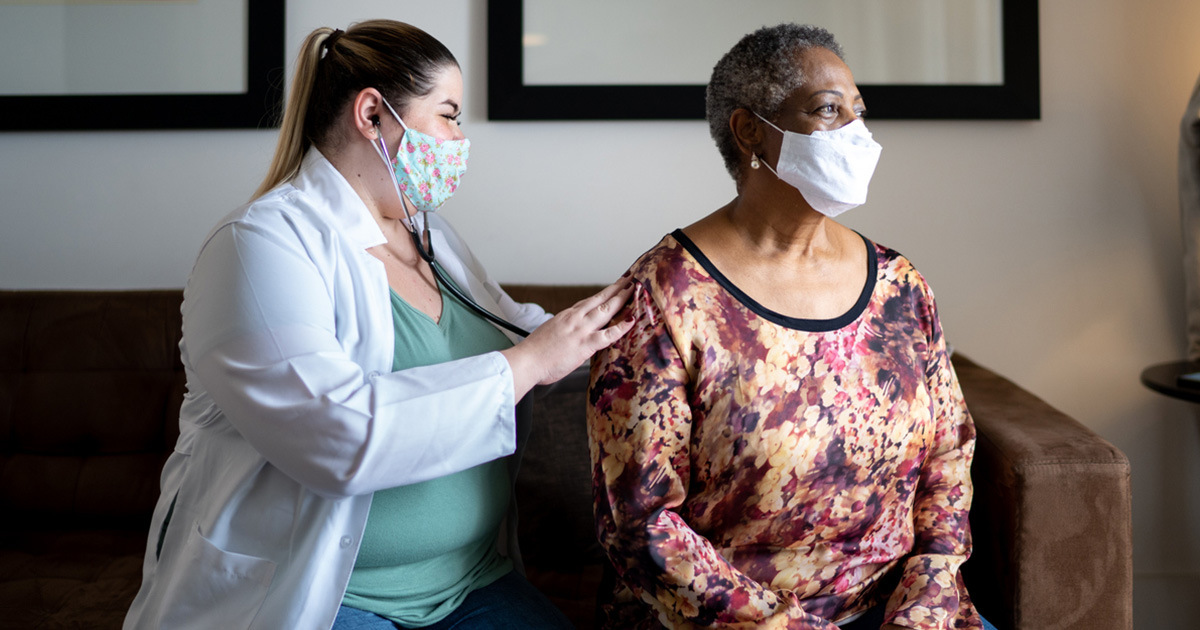COVID-19 has caused a major change in where and how health care is delivered in the United States. The pandemic accelerated the ongoing shift from traditional hospital settings to telehealth and hospital-at-home programs. These flexible health care delivery approaches are more than temporary measures prompted by pandemic-related regulatory flexibility. They provide several other benefits, including the following:
- More frequent contact with patients who have difficulties traveling to a health care facility
- Increased convenience and comfort for patients
- Greater insight for health care providers about non-medical obstacles to patients’ health, which are more visible in patients’ homes and include social determinants of health such as housing quality and accessibility
These benefits hold the promise of improved quality of care and better management of health care costs. But there is still a lot that isn’t well known yet about providing care at home instead of in a hospital or clinical setting. As health care systems and payers expand home-based care, they need to know who it can work well for, how it affects health, and how it affects overall health care spending. Mathematica recently partnered with the California Health Care Foundation to evaluate an innovative, home-based intensive care model for dually eligible (that is, enrolled in Medicaid and Medicare) and Medicaid-only enrollees with complex health care needs enrolled in two California Medicaid managed care plans.
What is home-based medical care?
Home-based medical care encompasses a variety of care models that often serve the most medically complex and socially vulnerable people. Core components in the care of these patients are medical management, comanagement, and oversight by nurse practitioners, physician assistants, and especially physicians—often in collaboration with an interprofessional care team—and the execution of a medical care plan. Essential care also requires addressing issues related to patients’ functional status, cognitive and behavioral concerns, and social determinants of health.
In the model we studied, Landmark Health, a physician-led health care provider organization, delivered coordinated home-based services, including on-demand clinical care and connections to social services, to high-risk Medicaid managed care members with multiple medical or behavioral health needs. Landmark’s model aims to reduce high-cost medical service use, such as emergency department visits and inpatient stays, and to improve patients’ quality of life through more intensive, home-based medical management. We evaluated outcomes from 2016 to 2018 with data provided by two managed care plans: Inland Empire Health Plan of Riverside and San Bernardino counties and Health Plan of San Mateo.
Together with findings from other programs, our evaluation supports the idea that providing coordinated home-based services that include a behavioral health component and address patients’ unmet social needs can meaningfully reduce acute care spending. Our evaluation revealed important insights about the home-based intensive care model:
- Driven by reductions in visits with an associated behavioral health diagnosis, it reduced emergency department visits and inpatient stays.
- It showed higher use of primary care overall and greater probability of a follow-up visit with a primary care provider within 30 days of hospital discharge. The intervention prioritized enrolling patients recently discharged from the hospital and improved coordination with primary care providers.
- Findings from the first year of the intervention were generally positive across both managed care plans. Findings for the second year, which we could only observe for one managed care plan’s enrollees, were inconclusive, raising questions about whether positive impacts can be sustained over time.
- Adjusting the model to fit the Medicaid managed care landscape presented unique challenges compared with its previous use among Medicare Advantage members. Addressing social needs was a necessary first step in treating many patients, and this required increasing the number of social workers on the care teams.
Our evaluation provides valuable evidence that supports home-based care models as an important approach to improving the quality and efficiency of care for patients with complex health care needs. Although providing services to a cohort of high-risk and high-cost Medicaid members is challenging, the intensive care model succeeded in achieving favorable results on several of its core goals.
The evaluation described here represents an important investment in rigorous evaluation work by health plans and their research partners, and it revealed important and promising innovations in health care delivery for Medicaid and Medicare enrollees.






